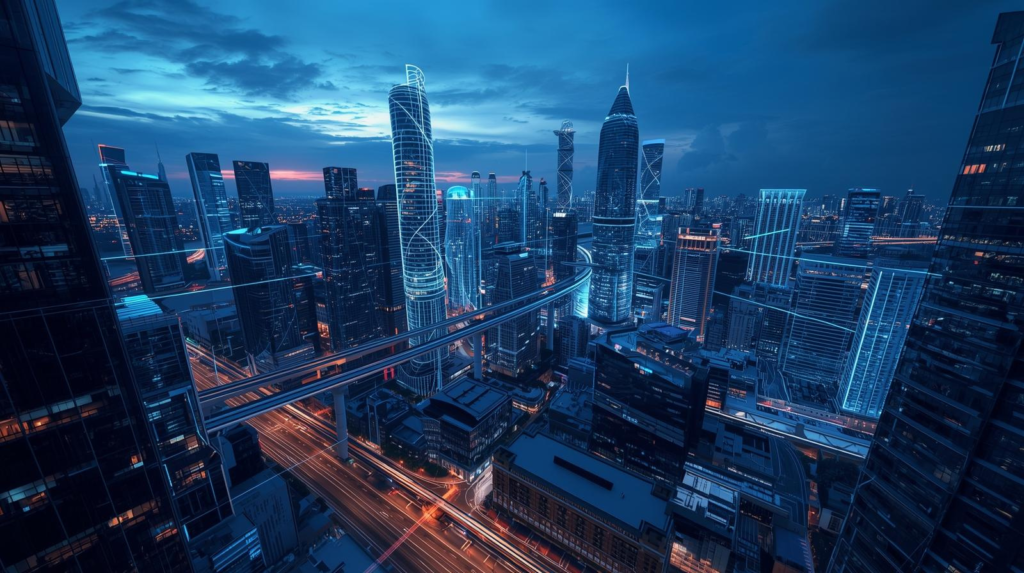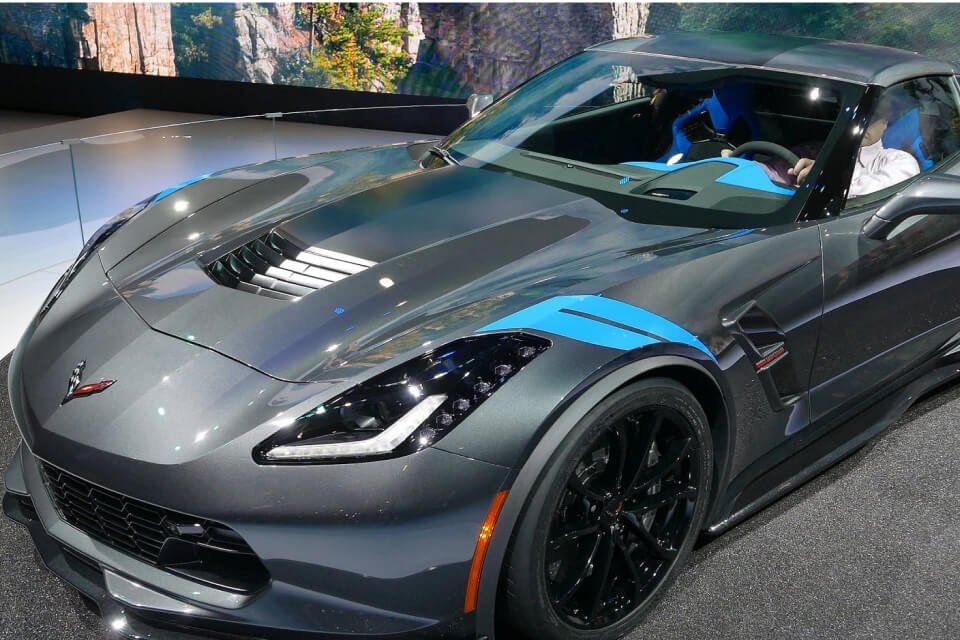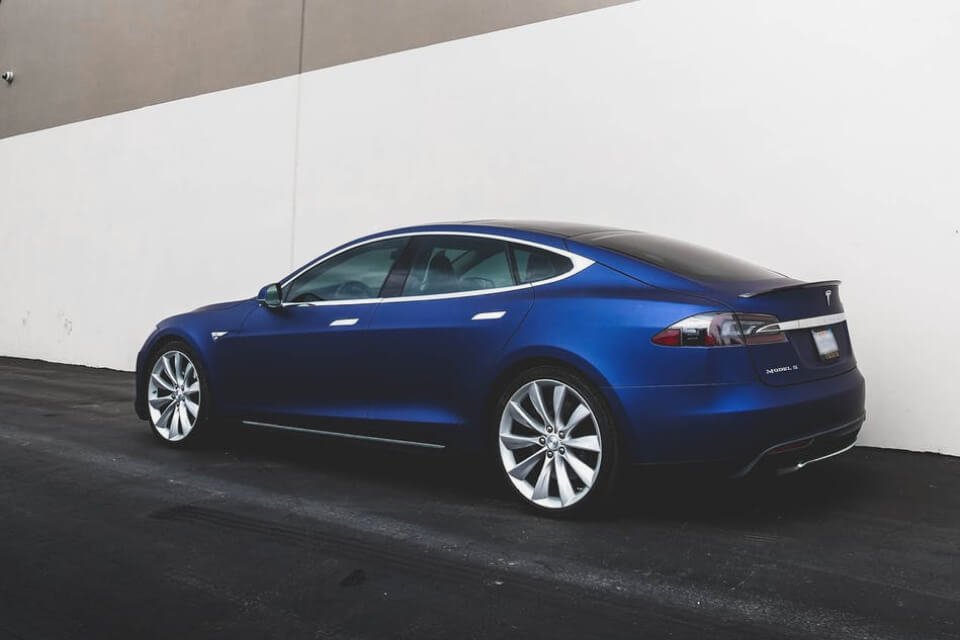
In the 21st century, cities are becoming smarter, more connected, and increasingly data-driven. At the heart of this transformation lies a groundbreaking innovation: digital twins in smart cities. Once restricted to manufacturing and aviation, digital twins now empower governments, policymakers, and urban developers to simulate, predict, and optimize city life like never before.
At AixCircle, we believe this technology will redefine the way humans experience urban living. By replicating entire cities in a virtual environment, digital twins allow leaders to make data-informed decisions, ensuring smarter governance, efficient resource allocation, and improved disaster preparedness. This blog takes a close look at Singapore’s Virtual Singapore Project while exploring global adoption, challenges, and the future outlook of this powerful
Introduction to Digital Twins in Smart Cities
The rise of digital twins in smart cities represents one of the most exciting shifts in urban technology. Simply put, a digital twin is a virtual replica of a physical asset, process, or system. In cities, this means an exact digital version of buildings, roads, energy grids, and even natural resources.
By integrating IoT sensors, AI, and big data, city planners can test scenarios, run predictive simulations, and manage resources in real time. This isn’t just about efficiency—it’s about creating resilient, sustainable, and citizen-friendly urban environments.
Case Study: Singapore’s Virtual Singapore Project
When we discuss the rise of digital twins in smart cities, one case study stands out globally—Virtual Singapore.
Objective
The project’s primary objective is to create a full-scale 3D digital twin of the entire city. This platform allows real-time monitoring and long-term planning, offering policymakers an unprecedented tool to shape the future.
Applications of Virtual Singapore
- Traffic Optimization
With millions of vehicles on the road, congestion is a major challenge. Digital twin simulations predict traffic flows based on variables like weather, public events, and time of day. By doing so, Singapore can redesign road systems, optimize signals, and reduce travel times. - Sustainability
Cities worldwide are under pressure to reduce carbon emissions. Virtual Singapore provides detailed energy consumption models, helping enforce greener building regulations and track renewable energy adoption. This promotes long-term sustainability while aligning with Singapore’s climate goals. - Disaster Preparedness
As a flood-prone region, Singapore uses rainfall simulations to predict vulnerable areas. Virtual Singapore allows authorities to test scenarios digitally before they occur, ensuring preventive infrastructure upgrades and faster emergency responses.
This case highlights how digital twins in smart cities can transform not only daily operations but also long-term strategic planning.
Global Adoption of Digital Twins in Smart Cities
Singapore is not alone in embracing this revolution. Around the world, forward-looking cities are building their own digital twins.
- Shanghai
Shanghai employs digital twin technology for smart transportation systems and environmental monitoring. From predicting traffic jams to tracking industrial emissions, Shanghai’s model is a cornerstone of its data-driven urban governance. - Helsinki
Helsinki focuses on urban development and emission reduction strategies. Its digital twin provides planners with insights into building design, infrastructure impact, and sustainable growth—helping the city progress toward carbon neutrality.
Together, these examples highlight a growing trend: the rise of digital twins in smart cities is becoming a global movement, with governments investing heavily in this futuristic approach to governance.
Challenges of Implementing Digital Twins in Smart Cities
Despite their promise, there are significant challenges to widespread adoption.
- High Cost of Implementation
Developing a full-scale digital twin requires immense investment in infrastructure, data collection, and computing resources. For smaller cities, affordability remains a hurdle. - Data Privacy Concerns
Digital twins rely on constant real-time monitoring of citizens, traffic, and energy use. This raises pressing questions about surveillance, consent, and the balance between security and privacy. - Cross-Department Collaboration
Building a city-scale digital twin requires seamless coordination between multiple government agencies, utility providers, and private sector partners. Breaking down silos is often more difficult than the technology itself.
These challenges must be addressed for digital twins to reach their full potential in shaping future cities.
Future Outlook: The Backbone of AI-Powered Governance
Looking ahead, the rise of digital twins in smart cities signals a paradigm shift in governance. Within the next decade, digital twins are expected to become the backbone of AI-powered urban management.
Imagine this: before enforcing a new traffic policy or building regulation, city leaders can test its impact in a virtual environment. Predictive models powered by AI will help governments design policies with minimal risks and maximum efficiency.
At AixCircle, we believe this future is closer than many realize. By 2035, most megacities may operate with some form of digital twin, integrating real-time data to manage transportation, energy, healthcare, and disaster response.
The Role of AI in Driving Digital Twin Innovation
The real force behind the rise of digital twins in smart cities is AI. Machine learning algorithms process data from IoT devices, while AI models simulate and predict outcomes in real time.
- Big Data Analytics enables cities to process billions of data points from sensors and citizens.
- AI Simulations allow testing of scenarios like pandemics, extreme weather, or infrastructure failures.
- Predictive Governance emerges, where policies are tested virtually before they’re implemented in reality.
This synergy of AI and digital twins will define the next generation of smart cities.jjj
Conclusion
The journey of digital twins in smart cities is only beginning, but its impact is already profound. From Virtual Singapore’s disaster preparedness to Shanghai’s smart transportation and Helsinki’s emission strategies, we see how digital replicas are shaping the real world.
Yes, challenges like cost and privacy exist. But the promise of safer, greener, and more efficient cities makes this investment worthwhile.
At AixCircle, we see the rise of digital twins in smart cities not just as a technological shift but as a social revolution—transforming how people live, move, and interact in the digital age.

